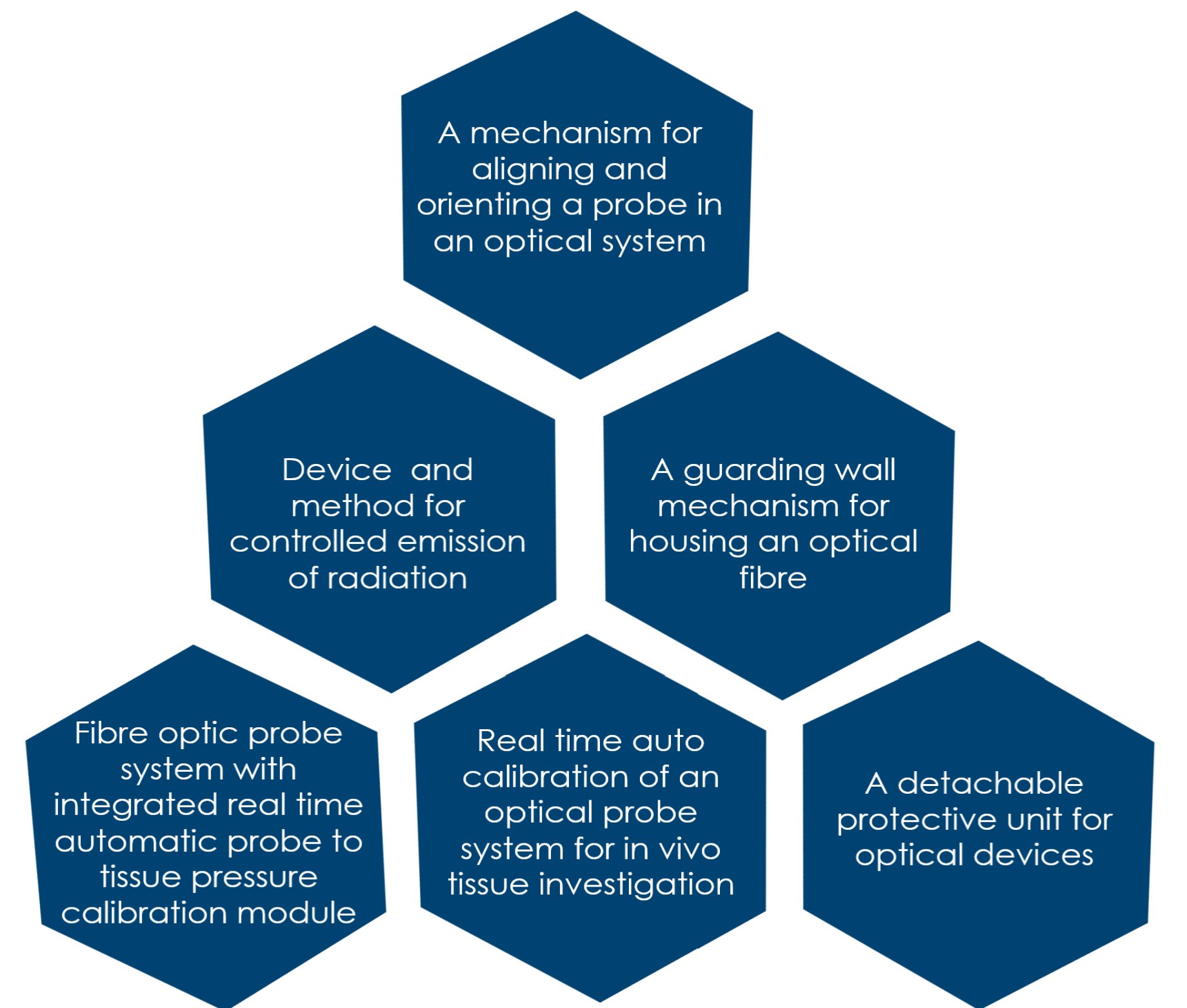


Various scientific setups (especially optical) involve a probe and a surface in numerous arrangements serving respective functions. These functions may involve discharging energy or material from probe to the surface or receipt of the same. Now more often than not there arises a need in scientific (especially experimental) setup for alignment of the probe to surface perpendicularly or a certain desired angle.
Currently, various active (powered) mechanisms are utilized to achieve this. In some cases with the two in contact and in others without any contact. Needles to mention these are available in both versions- manual and/or automatic.
However, the team at Bioscan Research has designed a subassembly that is automatic and passive (not powered) and works seamlessly in realtime to ensure the alignment of the probe automatically at a predefined angle to any irregular surface.
This has several applications across domains. However, Bioscan Research currently utilizes this for betterment of the efficacy of its products.

It is a requirement in any device/subassembly that the device needs to be switched on or powered only when certain conditions are met. The configurations and means of such switching varies widely.
For the purpose of ensuring the safe discharge of energy or material only on the desired surface and at limited power or force, Bioscan Research has designed an innovative assembly that achieves this continuously in real time without any need of human intervention.
This device not only controls the triggering or switching but it also discharges the energy or material adaptively suited to the exact requirement based on the prevailing conditions and/or internal or external environment.
Lastly, this device ensures that even if the power or force breaches the predefined limits, it is truncated to the order of acceptable range.

The devices or setups where degree of contact or coupling substantially affects the outcome of the device or setup, multiple ways of achieving the same are currently deployed. These may be powered or unpowered, active or passive, manual or automatic etc.
As Bioscan Research also intended to achieve a high degree of coupling for its device, it has designed a novel mechanism to achieve the same without any need of human intervention and it is also unpowered.
While deploying certain probes in particular there may arise a need to protect these probes against any physical damage for which Bioscan Research has designed a mechanical way of ensuring the safety of the probes against external environment while in use and otherwise.

In certain applications, an array of probes are to be installed on the device or setup and these probes then need to align themselves (say) perpendicular to the surface. In cases where the surface is plain or flat or regular, it is achieved with much ease in multiple applications, currently.
However, the team at Bioscan Research designed a mechanism comprising an array of multiple probes that can align themselves to the corresponding contact points on an irregular surface. This is achieved automatically i.e without any need of human intervention and also without any need of an extra power.
In short, this mechanism ensures that each probe in the array independently aligns itself perpendicular to the respective contact point on the surface without affecting the array or the device.

In certain applications, the distance between various particular probes in a system has to be retained, yet adapting the surface to maximum possible extent.
Bioscan Research has devised a mechanism to achieve the above with minimal tilting of the probes mounted on the system. This ensures better outcome of the devices that require the alignment of the probes perpendicular to a curved surface with limited tilting of the probes mounted on the device.
The above is achieved automatically i.e without any need of human intervention and also without any need of external power supply.